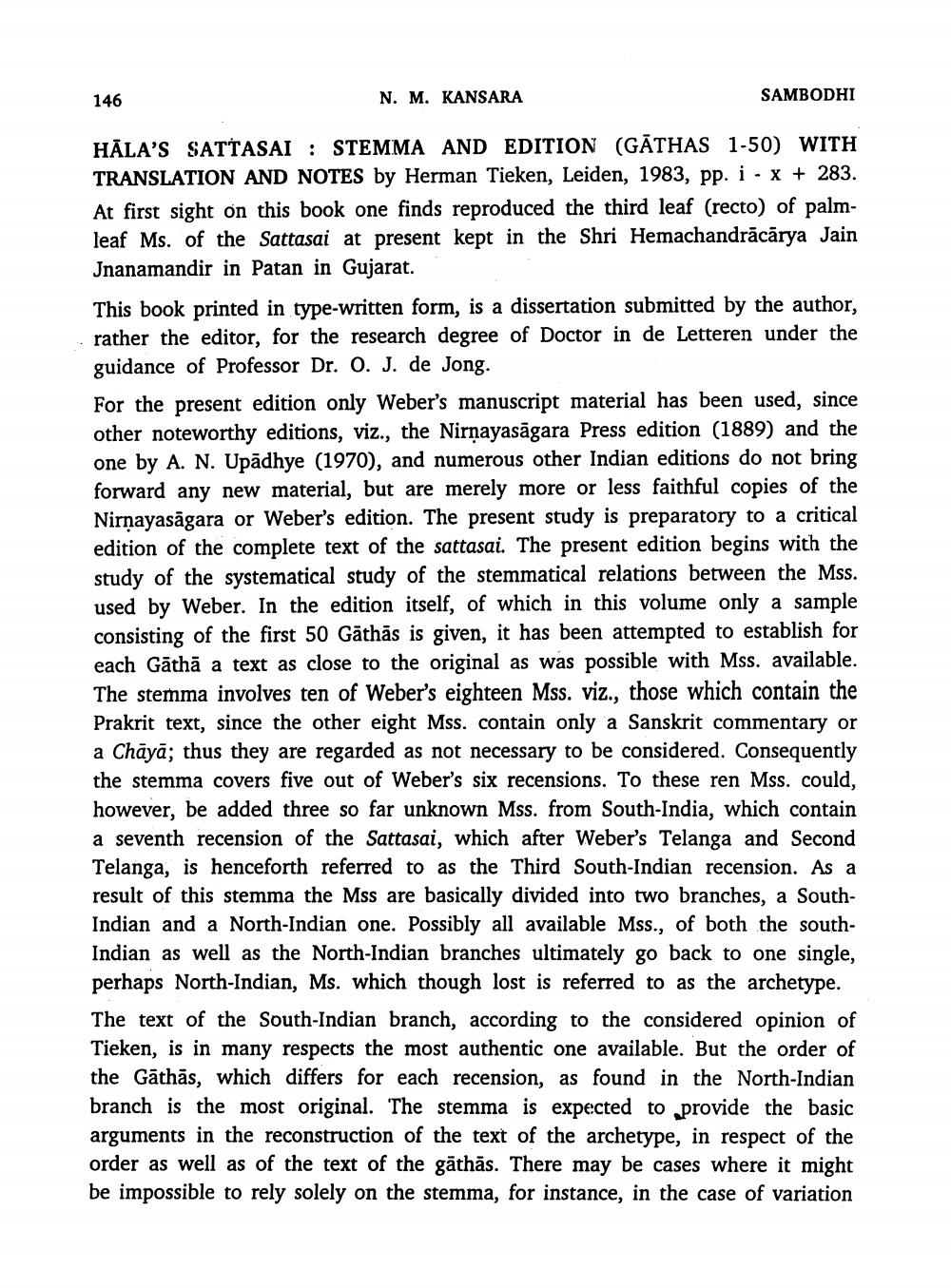________________
146
N. M. KANSARA
SAMBODHI
HĀLA'S SATTASAI : STEMMA AND EDITION (
GĀTHAS 1-50) WITH TRANSLATION AND NOTES by Herman Tieken, Leiden, 1983, pp. i - x + 283. At first sight on this book one finds reproduced the third leaf (recto) of palmleaf Ms. of the Sattasai at present kept in the Shri Hemachandrācārya Jain Jnanamandir in Patan in Gujarat. This book printed in type-written form, is a dissertation submitted by the author, rather the editor, for the research degree of Doctor in de Letteren under the guidance of Professor Dr. O. J. de Jong. For the present edition only Weber's manuscript material has been used, since other noteworthy editions, viz., the Nirnayasāgara Press edition (1889) and the one by A. N. Upadhye (1970), and numerous other Indian editions do not bring forward any new material, but are merely more or less faithful copies of the Nirnayasagara or Weber's edition. The present study is preparatory to a critical edition of the complete text of the sattasai. The present edition begins with the study of the systematical study of the stemmatical relations between the Mss. used by Weber. In the edition itself, of which in this volume only a sample consisting of the first 50 Gäthās is given, it has been attempted to establish for each Gātha a text as close to the original as was possible with Mss. available. The stemma involves ten of Weber's eighteen Mss. viz., those which contain the Prakrit text, since the other eight Mss. contain only a Sanskrit commentary or a Chāyā; thus they are regarded as not necessary to be considered. Consequently the stemma covers five out of Weber's six recensions. To these ren Mss. could, however, be added three so far unknown Mss. from South-India, which contain a seventh recension of the Sattasai, which after Weber's Telanga and Second Telanga, is henceforth referred to as the Third South-Indian recension. As a result of this stemma the Mss are basically divided into two branches, a SouthIndian and a North-Indian one. Possibly all available Mss., of both the southIndian as well as the North-Indian branches ultimately go back to one single, perhaps North-Indian, Ms. which though lost is referred to as the archetype. The text of the South-Indian branch, according to the considered opinion of Tieken, is in many respects the most authentic one available. But the order of the Gāthās, which differs for each recension, as found in the North-Indian branch is the most original. The stemma is expected to provide the basic arguments in the reconstruction of the text of the archetype, in respect of the order as well as of the text of the gāthās. There may be cases where it might be impossible to rely solely on the stemma, for instance, in the case of variation




